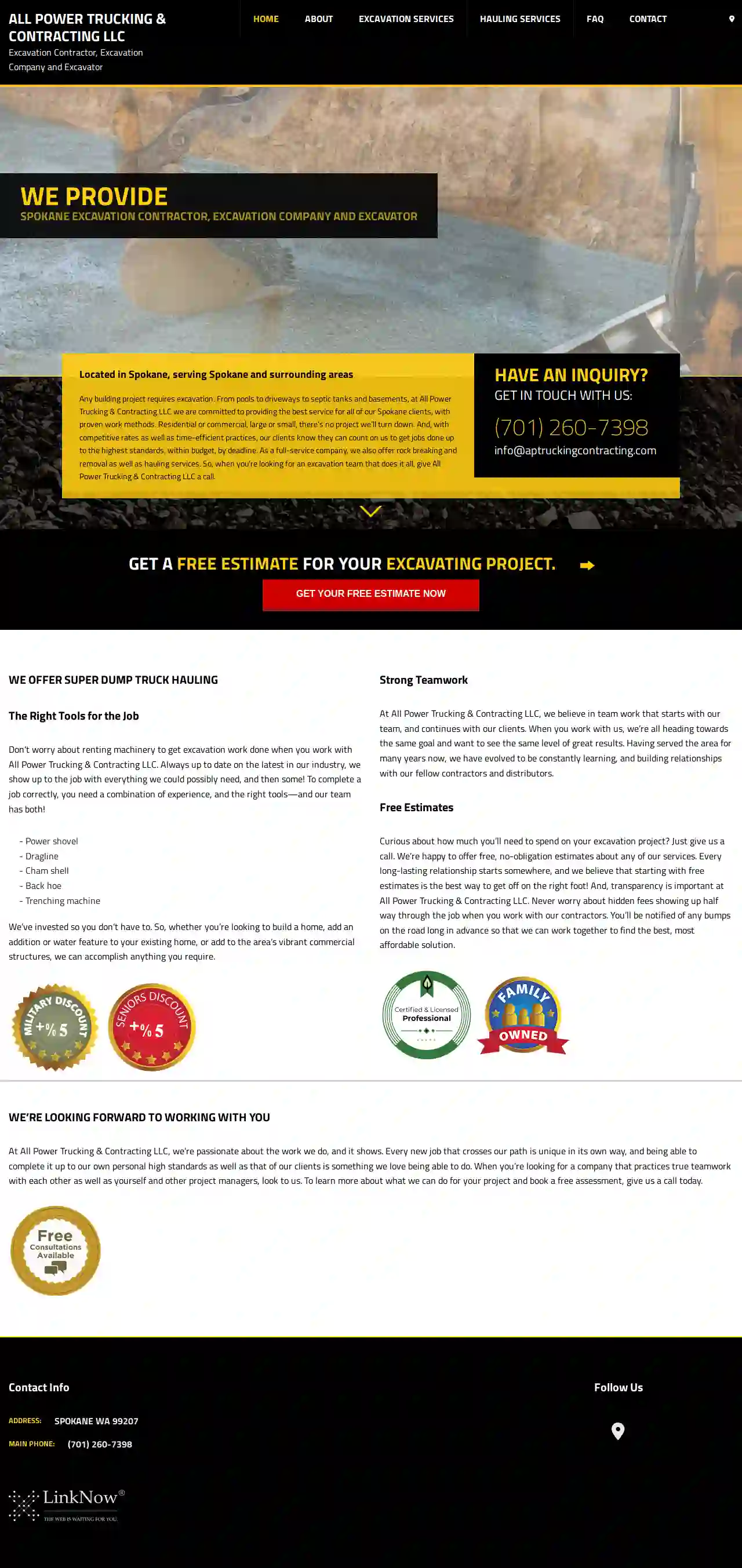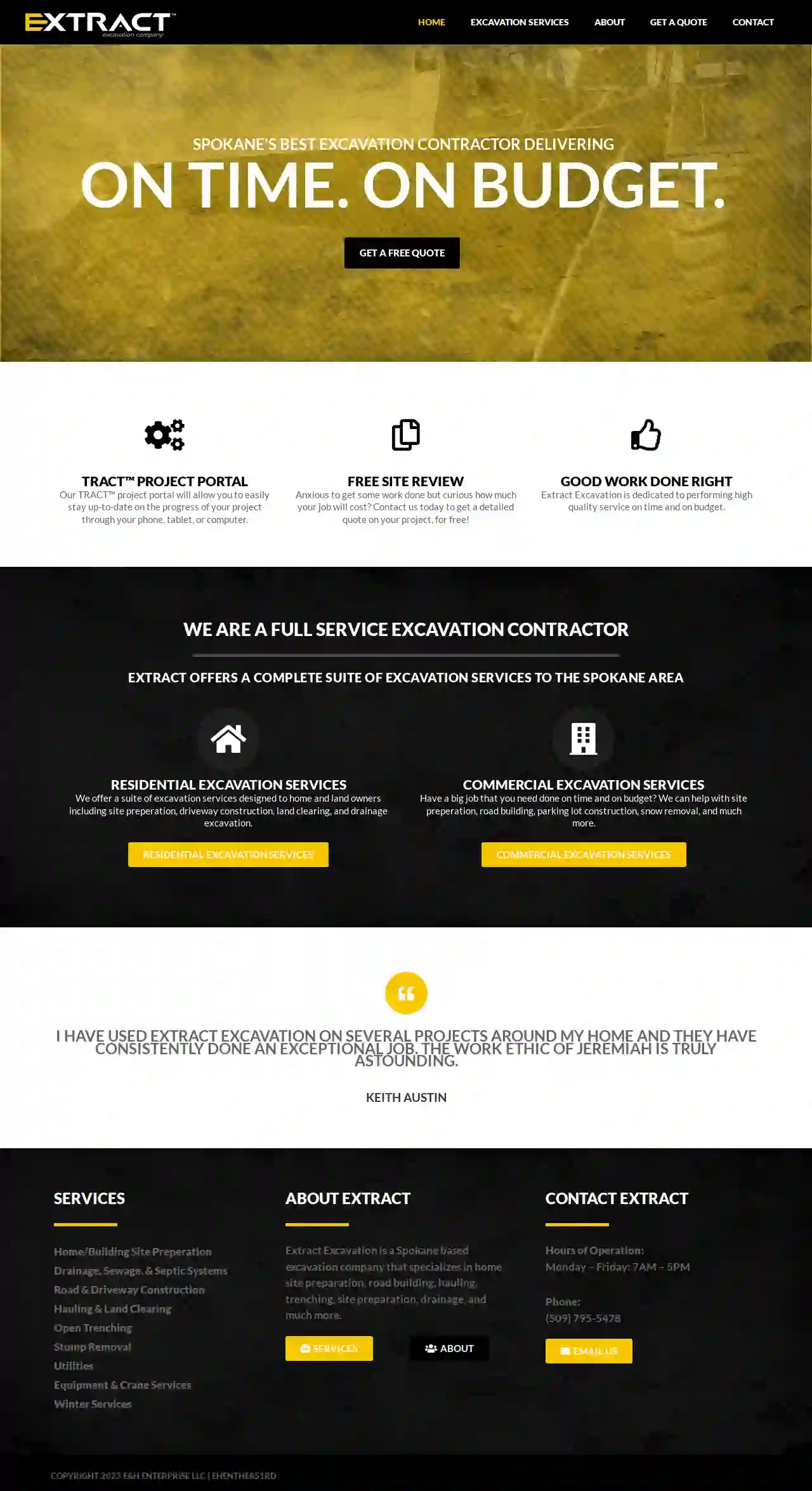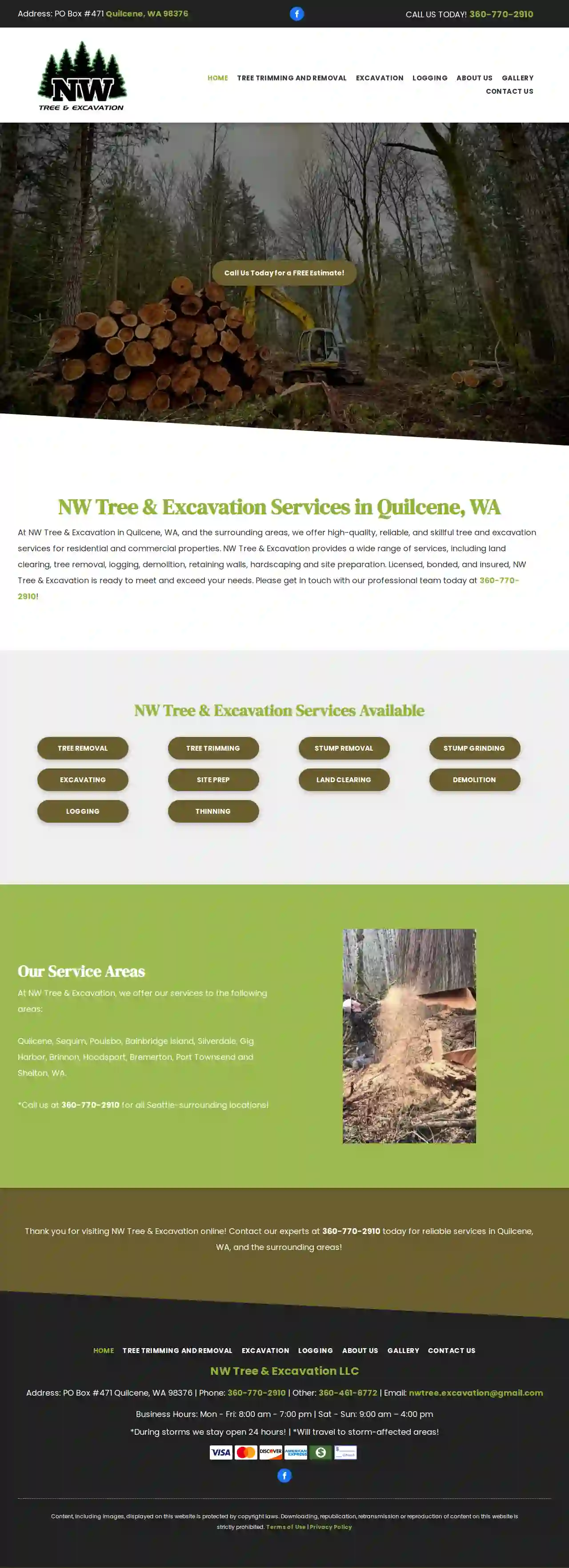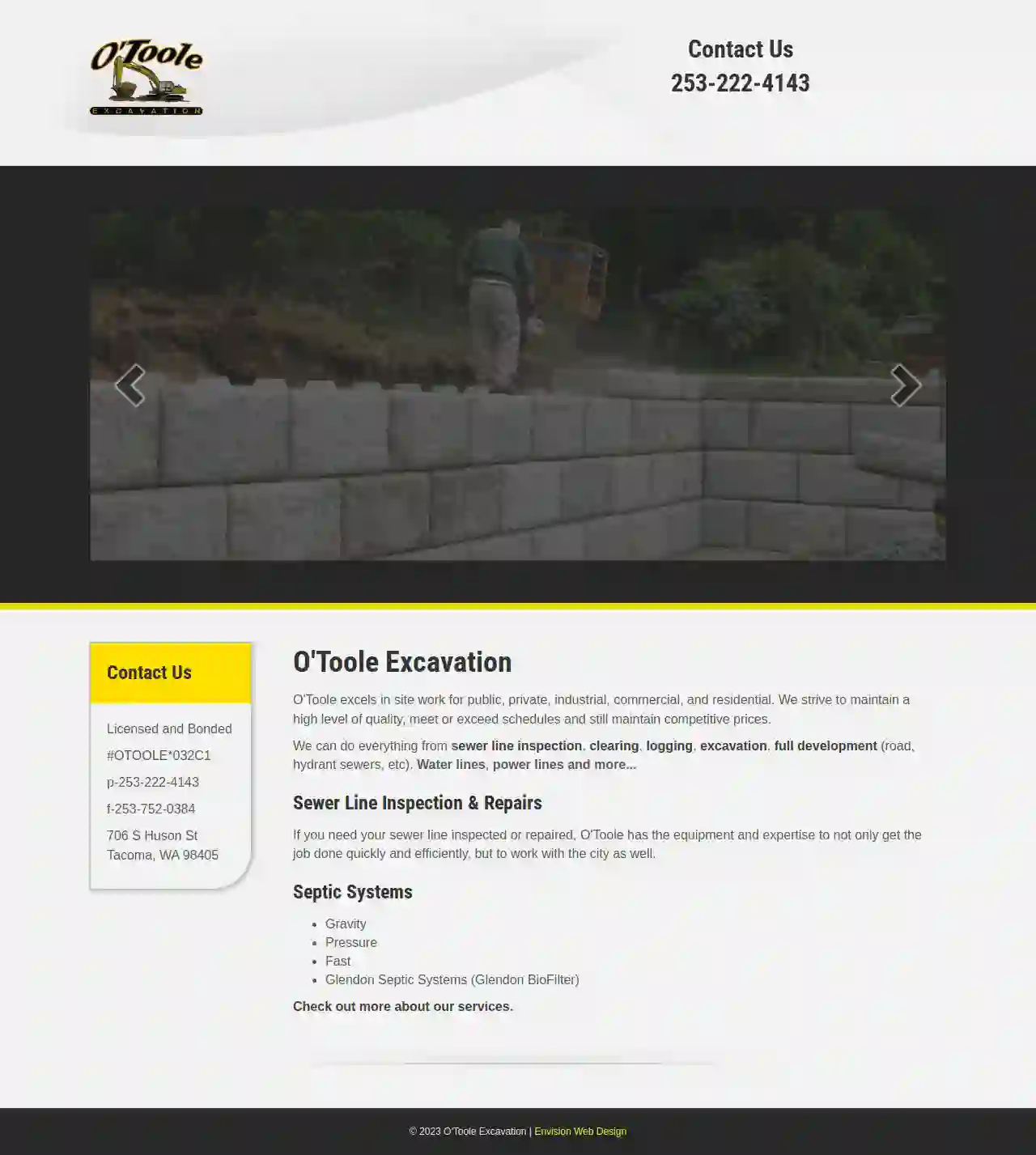Demolition Contractors Silverdale
Find top Demo Companies in Silverdale
Receive multiple Demolition Services quotes for your project today! Compare profiles, reviews, accreditations, portfolio, etc... and choose the best deal.

Level Earthworks LLC
52 reviews1202 Black Lake blvd ste c, Olympia, 98502, USLevel Earthworks LLC Level Earthworks is ready to help you make your dream property come to life. We offer a wide range of services, from site development and land clearing to demolition and snow removal. We are committed to providing our clients with the highest quality workmanship at an affordable price. We are also committed to safety and will always work to ensure that your project is completed safely and efficiently. We are a locally owned and operated business with over 15 years of experience in the industry. We are fully licensed and insured and have a proven track record of success. We are dedicated to providing our clients with the best possible service and will always go the extra mile to ensure that you are satisfied with our work. We offer free estimates and are available to answer any questions you may have. Call us today to schedule your free estimate and let us help you make your dream property a reality. We are committed to providing our clients with the highest quality workmanship at an affordable price. We are also committed to safety and will always work to ensure that your project is completed safely and efficiently. We are a locally owned and operated business with over 15 years of experience in the industry. We are fully licensed and insured and have a proven track record of success. We are dedicated to providing our clients with the best possible service and will always go the extra mile to ensure that you are satisfied with our work. We offer free estimates and are available to answer any questions you may have. Call us today to schedule your free estimate and let us help you make your dream property a reality.
- Services
- Why Us?
- Gallery
Get Quote
All Power Trucking & Contracting LLC
Spokane, 99207, USAll Power Trucking & Contracting LLC: Your Trusted Excavation Partner in Spokane At All Power Trucking & Contracting LLC, we are your one-stop shop for all your excavation needs in Spokane, WA, and surrounding areas. Whether you're a homeowner looking to build a dream pool or a commercial developer undertaking a large-scale project, we have the expertise, equipment, and commitment to deliver exceptional results. Why Choose All Power Trucking & Contracting LLC? Experienced and Reliable: We have a proven track record of delivering high-quality excavation services, earning the trust of countless satisfied clients. Full-Service Solutions: From excavation and demolition to hauling and rock breaking, we offer a comprehensive range of services to meet all your project requirements. Commitment to Excellence: We are dedicated to providing exceptional customer service, meticulous workmanship, and timely project completion. Competitive Rates: We offer competitive pricing without compromising on quality, ensuring you get the best value for your investment. Modern Equipment: We invest in the latest excavation equipment to ensure efficiency, precision, and safety on every job. Strong Teamwork: We believe in collaborative partnerships with our clients, working together to achieve shared goals and deliver outstanding results. Our Services Excavation Services Paving Services Demolition Driveway Excavation Pond Digging and Filling Garden Excavation Pool Digging Pool Filling In Cisterns Septic Tanks Sewers / Underground Utilities Basement Walkouts Rock Breaking and Removal Hauling Services Get a Free Estimate Today Don't hesitate to contact us for a free, no-obligation estimate on your excavation project. We're here to answer your questions and provide expert advice to help you make informed decisions.
- Services
- Why Us?
- Gallery
Get Quote
Straight Up Excavation and Drainage
525 reviews1341 Bay St Ste 130, Port Orchard, 98366, USExpert Excavation Services for Sustainable Property Development Straight Up Excavation and Drainage (previously Straight Up Tractor Services) is proud to offer quality Land Management Services to local home owners and business owners in the Kitsap County, Mason County and Gig Harbor, Washington area. Our experienced professionals have the necessary training and expertise to perform excavation, site preparation, land clearing, trenching and related services with high-quality craftsmanship. Call Straight Up Excavation and Drainage to discuss your next land management project today!
- Services
- Why Us?
- Gallery
Get Quote
Extract Excavation Spokane
51 reviews3727 N. Lyons Rd., Spokane, USAbout Extract Excavation Our team behind Extract Excavation (E&H Enterprise LLC) has a long history of providing exceptional service to commercial construction projects. Our story begins as a steel erector and steel fabricator where we helped build large-scale steel buildings across the Pacific Northwest. In 2009, we saw the opportunity to expand further and moved into concrete forming and placing and have completed many large-scale projects. In 2015, we saw yet another opportunity. We discovered that there is a demand for quality excavation services on a smaller, more intimate scale. To help meet this demand, we founded Extract Excavation. Extract Excavation’s focus is to deliver the high quality workmanship and service expected in large commercial jobs on smaller light commercial residential projects. Extract has the equipment, skill, and experience you would expect from a large commercial excavator- but we are available to help with everything from driveways and home site preparation, to parking lots and road building. If you have questions about your project and would like to talk to an excavation expert, please contact us today.
- Services
- Why Us?
- Our Team
- Testimonials
- Gallery
Get Quote
Down to Dirt Excavation, LLC
511 reviewsPort Orchard, USExcavationExcellence You Can Rely On Choose Down to Dirt Excavation Site for all your excavation needs. We pride ourselves on providing exceptional service, detailed workmanship, and a dedication to your project’s success. Get started with us today and see the difference expert excavation can make. Your Trusted Excavation And Hauling Services in Port Orchard, Washington If you’re looking for a trusted excavation and hauling contractor in Port Orchard, Washington, Down to Dirt Excavation LLC is here. We pride ourselves on providing high-quality service and customer service to ensure that your excavation project is handled as quickly as possible without skipping steps. Work With Down to Dirt Excavation LLC Excavation If you know you have a project that requires a qualified professional to handle excavations, Down to Dirt Excavation LLC is eager to assist. Contact us today so we can discuss your project and our experience and schedule your residential or commercial excavation service. WHO WE ARE DOWN TO DIRT EXCAVATION LLC is a locally owned and operated company in the greater Gig Harbor area. John Bassler is the owner/operator with over 20 years of excavation experience in both residential and commercial projects. We provide our clients with a wide range of services to cover their needs. John can provide valuable project insight to ensure the best results! Get in touch today to learn more about what we can offer you and to receive your free estimate. Our Vision our vision is to be the leading provider of excavation services, setting the industry standard for excellence, innovation, and sustainability. We aspire to be recognized not only for the quality of our work but also for our commitment to customer satisfaction, safety, and environmental stewardship. Our mission Our mission at Down to Dirt Excavation Site is to deliver superior excavation services tailored to the unique needs of each project. We are dedicated to providing efficient, reliable, and cost-effective solutions that meet or exceed our clients' expectations. About Us At Down to Dirt Excavation Site, we are dedicated to providing top-tier excavation services that cater to a wide range of projects. With years of industry experience and a commitment to excellence, we pride ourselves on delivering precision, reliability, and exceptional customer service. Trust us to transform your excavation needs into reality with unparalleled expertise and a commitment to quality. Join the many satisfied clients who have chosen Down to Dirt Excavation Site as their trusted partner for all their excavation projects.
- Services
- Why Us?
- Our Team
- Gallery
Get Quote
Lish Excavation Co
Spokane Valley, 99206, USAbout Lish Excavation Lish Excavation is a family-owned and operated business proudly serving Eastern Washington and North Idaho since 2007. We are dedicated to providing our customers with high-quality excavation services at affordable prices. We work closely with our customers to understand their needs and ensure they are satisfied with the final product. We believe in building strong relationships with our customers and local contractors. Over the years, we have developed partnerships with local businesses for most of the materials and services we use, which allows us to keep our costs low and pass those savings on to our customers. Our commitment to quality workmanship and affordable prices has made Lish Excavation one of the area's top providers of reliable excavating solutions. We are licensed in Washington and Idaho. Meet the Owner Bryce Lish is the owner of Lish Excavation. He has over 15 years of experience in the excavation industry and is committed to providing his customers with the best possible service. You can reach Bryce at (509) 216-0549 or [email protected].
- Services
- Why Us?
- Our Team
- Gallery
Get Quote
TDR Development
51 reviews3025 S Geiger Blvd #3, Spokane, 99224, USAbout Us Established in 2019 by three brothers, TDR Development companies are a real estate development, excavation, and renovation conglomerate. And its affiliate companies own, operate, and manage a significant real estate portfolio, including approximately 1 million square feet of commercial/retail/office property, multi-family residential, and future development projects in Washington. TDR Development has always been committed to accomplishing high-quality development projects on time and exceeding expectations. We distinguish because of our dedication to teamwork, both with the people we work with and with the people we work for.
- Services
- Why Us?
- Gallery
Get Quote
NW Tree & Excavation LLC
513 reviewsPO Box #471, Quilcene, 98376, USNW Tree & Excavation: Your Trusted Partner for Tree and Excavation Services in Quilcene, WA At NW Tree & Excavation in Quilcene, WA, and the surrounding areas, we offer high-quality, reliable, and skillful tree and excavation services for residential and commercial properties. We are committed to providing exceptional service and exceeding your expectations. Our team of experienced professionals is dedicated to delivering safe and efficient solutions for all your tree and excavation needs. Whether you require tree removal, land clearing, stump grinding, or site preparation, we have the expertise and equipment to handle any project, big or small. We understand the importance of preserving the natural beauty of your property. That's why we use environmentally friendly practices and strive to minimize disruption during our operations. Contact us today for a free estimate and let us help you transform your property into the outdoor oasis you've always dreamed of.
- Services
- Why Us?
- Gallery
Get Quote
Earthworks Excavating Services
4.914 reviews1420 SE 13th Street, Battle Ground, 98604, USAbout Earthworks Excavating Services Serving the Vancouver WA area since 1999, Earthworks Excavating Services is a family-owned and operated excavating company. We’re proud of the strong reputation we’ve built as a successful full-service contractor company. We have the experience and expertise to care for your large and small construction projects. Our Services Earthworks Excavating Services offers a wide range of services, including: Excavation Services Septic System Installation Sewer Installation Demolition Site Development Debris Removal Residential Excavating Commercial Site Development Our Commitment We are committed to providing our clients with the highest quality service at a fair price. We are also committed to safety and environmental responsibility. We are fully licensed and insured, and we are members of the Better Business Bureau.
- Services
- Why Us?
- Testimonials
- Gallery
Get Quote
O'Toole Excavation
51 reviews706 S Huson St, Tacoma, 98405, USO'Toole Excavation O'Toole excels in site work for public, private, industrial, commercial, and residential projects. We are committed to delivering high-quality work, meeting or exceeding project deadlines, and maintaining competitive pricing. Our comprehensive services include everything from sewer line inspection and clearing to logging, excavation, and full development (roads, hydrants, sewers, etc.). We also handle water lines, power lines, and more. We understand the importance of working efficiently and effectively, and we are dedicated to providing our clients with the best possible service. We are also committed to working closely with the city to ensure that all projects are completed in accordance with local regulations.
- Services
- Why Us?
- Gallery
Get Quote
Over 22,076+ Excavation Contractors on our directory
Our excavation providers operate in Silverdale and surrounding areas!
ExcavationHQ has curated and vetted Top Excavation Contractors near Silverdale. Find a reliable pro today.
Frequently Asked Questions About Demolition Contractors
- General Liability Insurance: Covers bodily injury or property damage to third parties caused by the contractor's negligence.
- Workers' Compensation Insurance: Provides benefits to workers injured on the job.
- Pollution Liability Insurance: Covers costs associated with environmental contamination caused by demolition activities.
- Professional Liability Insurance: Protects against claims of negligence or errors in professional services, such as demolition planning or consulting.
- Project Assessment: The demolition contractor evaluates the structure, site conditions, and project requirements.
- Permitting: Obtain necessary demolition permits from local authorities.
- Site Preparation: Secure the site, disconnect utilities, and remove any valuable or reusable items.
- Hazardous Material Abatement: Professionally remove asbestos, lead paint, or other hazardous materials if present.
- Demolition: Execute the chosen demolition method, bringing down the structure safely and efficiently.
- Debris Removal and Site Cleanup: Sort, process, and dispose of demolition debris responsibly. Clean up the site to prepare it for future use.
- Dust Suppression: Use water spraying, misting systems, or other dust suppression techniques to control airborne particles.
- Noise Barriers: Erect temporary noise barriers around the demolition site to reduce noise transmission to nearby properties.
- Work Schedule: Schedule noisy demolition activities during permitted hours to minimize disturbance to neighbors.
- Communication: Keep neighbors informed about the demolition schedule and any potential disruptions.
What is the importance of insurance in demolition projects?
What are the steps involved in a typical demolition process?
How can I minimize the dust and noise from demolition?
How can I tell if my building contains asbestos?
What is the importance of insurance in demolition projects?
- General Liability Insurance: Covers bodily injury or property damage to third parties caused by the contractor's negligence.
- Workers' Compensation Insurance: Provides benefits to workers injured on the job.
- Pollution Liability Insurance: Covers costs associated with environmental contamination caused by demolition activities.
- Professional Liability Insurance: Protects against claims of negligence or errors in professional services, such as demolition planning or consulting.
What are the steps involved in a typical demolition process?
- Project Assessment: The demolition contractor evaluates the structure, site conditions, and project requirements.
- Permitting: Obtain necessary demolition permits from local authorities.
- Site Preparation: Secure the site, disconnect utilities, and remove any valuable or reusable items.
- Hazardous Material Abatement: Professionally remove asbestos, lead paint, or other hazardous materials if present.
- Demolition: Execute the chosen demolition method, bringing down the structure safely and efficiently.
- Debris Removal and Site Cleanup: Sort, process, and dispose of demolition debris responsibly. Clean up the site to prepare it for future use.
How can I minimize the dust and noise from demolition?
- Dust Suppression: Use water spraying, misting systems, or other dust suppression techniques to control airborne particles.
- Noise Barriers: Erect temporary noise barriers around the demolition site to reduce noise transmission to nearby properties.
- Work Schedule: Schedule noisy demolition activities during permitted hours to minimize disturbance to neighbors.
- Communication: Keep neighbors informed about the demolition schedule and any potential disruptions.